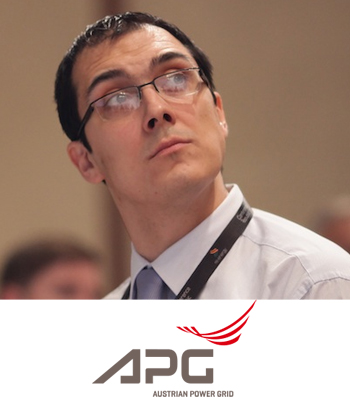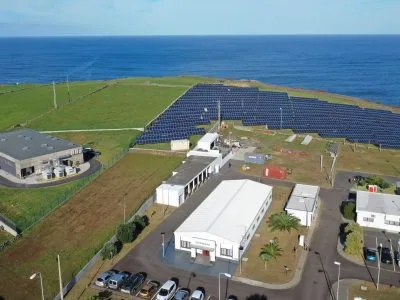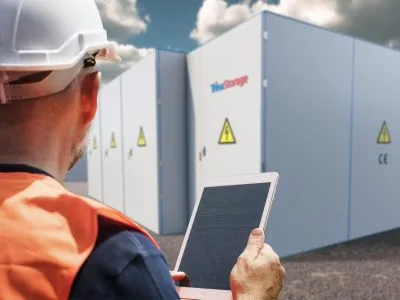An interview with Milan Vukasovic of APG
This week, we talk to Milan Vukasovic who is responsible for Team Coordination “Network Security Standards” at Austrian Power Grid AG.
1. How Europe’s Regulatory Unbundling Rules Facilitates Cross-Border Transmission And Trading Opportunities For Energy Storage And The Flexible Providers?
When it comes to the flexible energy providers (in the first line demand-side aggregators), rules for the demand facilities connected to transmission and distribution system have been defined in the Network Code on Demand Connection (NC DC). In total, five services for demand response are defined: active/reactive power control, transmission constraint management, very fast active power control and system frequency. Most of them are to be provided by demand units and/or aggregators, in most of the cases by considering market principles. Preconditions to participate in the balancing market organized by TSOs, as well as different types of balancing reserve products, are defined in the Guideline on Electricity Balancing (Gl EB).
A general problem of storage in the current energy market is the lack of an agreed definition at the level of European Union. In some cases, storage systems are handled as end consumers, resulting in double fee imposition. It is important that the European Commission (EC) dedicated enough attention to the topic of energy storage through batteries in the Winter Package, published at the end of 2016. In the document, a proposal to remove double grid fees for energy storage systems has been made. Other important market design change is a removal of renewable energy curtailment, especially as storage systems could absorb surplus of green energy injected into the grid, and facilitate further integration of internal electricity market.
2. Can you please share your most recent interesting and challenging project that you have worked on within the Austrian Power Grid (APG)?
There are plenty of them. Currently all the European TSOs are dealing with the implementation of different processes from the various guidelines and network codes (3rd energy package). This will lead to a more efficient operation of transmission grid, effective integration of renewables and deployment of flexible energy providers on the consumption side.
Some of the challenging projects include implementation of cross-border redispatch mechanism (in close coordination with regional security centers) that allows TSOs to ensure transmission system security by changing market-based dispatch of the different power plants / demand units, based on their financial bids for such an action. In parallel, and within Horizon 2020 project “FutureFlow”, APG and other involved TSOs are implementing a pilot project that deals with the cross-zonal exchange of a very fast automatically activated frequency restoration reserve (aFRR). Not only will power plants be able to participate, but also demand-side units and distributive generation is going to be activated among four countries during the pilot tests announced for 2018. Another very interesting project is the development of a real-time system monitoring interface which use data gathered from the Wide Area Measurement System (WAMS). Currently we analyse which type of indicators are to be developed by using the basic system measurements gathered in high resolution and synchronized with each other (different substations). The idea would be to develop a toolkit that could give, close to the real-time, a proper signal to the system operators’ staff and make them aware about some “anomalies” in the system (low damped inter-area frequency oscillations, voltage stability…).
3. How to make energy storage projects bankable?
Indeed, there is no clear evidence of a sustainable business model provided for ESS (battery). A long-term reliable and secured cash-flow framework is still missing. The good thing is that there are quit some research and development projects in this field, which allow technology to improve and reduce total costs.
Actually, all involved “players in the chain” would need to do their best and contribute to a battery business model, but especially manufacturers, operators and regulators. Manufactures could positively influence investment costs by prolonging the operational life of a battery. In parallel, operators would need to search for a diversified source of income (day-ahead, balancing reserve and energy market…) while regulators need to properly consider, and eventually incentivize this type of technology in the legislative – such as in the fourth energy package.
Currently, when looking at the market, there are some important barriers to allow battery systems to become bankable, such as very low energy price and at the same time (still) very high price of cobalt.
4. In which field you can imagine that energy storage could be valuably deployed from the perspective of TSOs and/or DSOs?
A battery storage system could be of interest for TSOs when it comes to provision of the specific services, such as enhanced frequency response and damping of low-frequency system oscillations. To support future system stability and security, one could test its deployment for stabilization of system frequency by provision of so-called synthetic inertia. On the side of DSOs those valuable services would include voltage stability, but also demand shaving and congestion relief, deferring expensive investments. In a case of system emergency conditions, the usage of battery storage system to stabilize frequency (defence plan and/or system restoration) could be of interest.
If you want to know more about this and other topics directly from end users of energy storage technologies join us at one of these annual events: The Energy Storage World Forum (Grid Scale Applications), or The Residential Energy Storage Forum, or one of our Training Courses.




